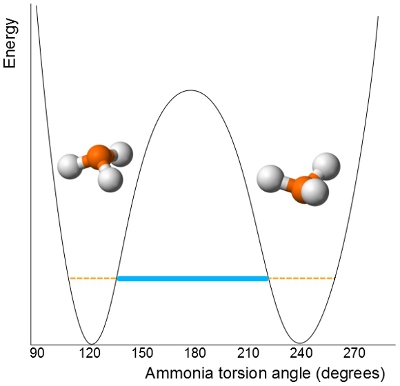Green Bank Observatory | National Science Foundation | 2017 Jun 15
[img3="A ribbon of ammonia — a tracer of star-forming gas — in the Orion Nebula as seen with the GBT (orange). Background in blue is a WISE telescope infrared image showing the dust in the region. — Credit: R. Friesen, J. Pineda, et al; GBO/AUI/NSF"]http://www.dunlap.utoronto.ca/wp-conten ... _large.jpg[/img3][hr][/hr]A team of astronomers has unveiled a striking new image of the Orion Molecular Cloud (OMC) – a bustling stellar nursery teeming with bright, young stars and dazzling regions of hot, glowing gas.
The researchers used the National Science Foundation’s (NSF) Green Bank Telescope (GBT) in West Virginia to study a 50 light-year long filament of star-forming gas that is wending its way through the northern portion of the OMC known as Orion A.
The GBT rendered this image by detecting the faint radio signals naturally emitted by molecules of ammonia that suffuse interstellar clouds. Scientists study these molecules to trace the motion and temperature of vast swaths of star-forming gas.
These observations are part of the first data release from a large campaign known as the Green Bank Ammonia Survey. Its purpose is to map all the star-forming ammonia and other key tracer molecules in a massive structure known as the Gould Belt.
The Gould Belt is an extended ribbon of bright, massive stars stretching about 3,000 light-years in an arc across the sky. This first release covers four distinct Gould Belt clouds, one located in Taurus, one in Perseus, one in Ophiuchus, and Orion A North in Orion. ...
Radio Astronomers Peer Deep into the Stellar Nursery of the Orion Nebula
Dunlap Institute for Astronomy & Astrophysics | University of Toronto | 2017 Jun 15
The Green Bank Ammonia Survey (GAS): First Results of NH3 mapping the Gould Belt - Rachel K. Friesen, Jaime E. Pineda et al
- arXiv.org > astro-ph > arXiv:1704.06318 > 20 Apr 2017

